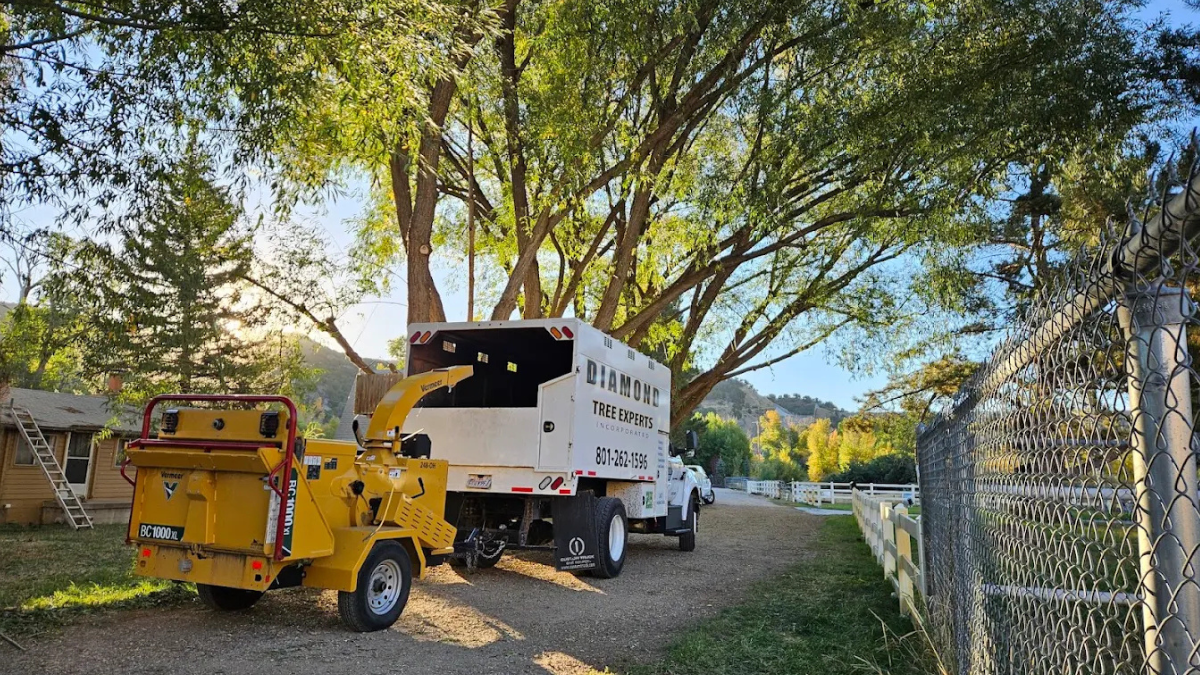You cannot cut protected tree species, heritage trees, or trees on public land without a permit in South Salt Lake City. Many homeowners don’t know which trees they can remove. This matters because cutting the wrong tree can cost you thousands in fines.
Local tree protection laws protect our community’s green spaces. We understand you want to manage your property safely. Our team helps South Salt Lake residents navigate these rules.
Reading this post teaches you exactly which trees need permits. You’ll learn how to check before cutting anything down.

Protected Trees and Regulations in Salt Lake City, UT
Protected tree species and heritage trees require special permission before removal. South Salt Lake has strict tree protection laws that keep our neighborhoods beautiful and healthy.
Heritage and Mature Trees
Heritage trees are old, large, or historically important trees. The Utah Heritage Tree Act protects certain trees based on age, size, and species. These trees often have trunk circumferences over specific limits. Removing them without approval brings serious penalties.
Protected Species
Native protected species receive legal protection under state law. Oak trees commonly need permits before cutting. Elm and maple trees may also be protected. Check with local officials before touching any large tree.
Public Land
Trees on public land belong to everyone. You cannot cut them without city approval. Public tree removal permit rules require special requests. The city’s Urban Forestry Office handles all public tree decisions.
Permit Required
Most tree removal needs a tree removal permit from the city. Municipal tree ordinances require permits for specimen trees. Large trees almost always need approval first.
Reasons You Should Not Cut a Tree
Trees should not be cut during the growing season from spring to early fall. Cutting during growth causes serious damage and disease.
Growing Season
Cutting trees in spring or summer weakens them. Tree management plans recommend waiting until late fall. Damage during growth leads to decay and pest problems. Professionals always wait for the right season.
Leaning or Unstable Trees
Leaning trees are dangerous to fell yourself. They can fall unpredictably and cause injury. Arborist tree protection assessment determines if removal is safe. Never attempt removing unstable trees alone.
Undesirable or Invasive Trees
Some trees harm your landscape or neighborhood. Invasive species spread quickly and damage native plants. Local guidelines still apply even for unwanted trees. Contact professionals before removing any tree.
How to Check if You Can Cut a Tree
Contact local government, assess the species and size, speak with an arborist, and check utility laws before cutting. This four-step process protects you from expensive mistakes.
Contact Local Government
Call South Salt Lake City’s planning office first. They explain tree protection enforcement rules for your property. Officials tell you which trees need permits. This conversation takes just minutes and saves thousands.
Assess Species and Size
Large trees almost always need permits. Native species often have protection status. Check the trunk circumference and height. Bigger trees mean stricter rules apply.
Speak with an Arborist
Certified arborists know tree protection guidelines compliance inside out. They assess tree health and removal needs. Professionals determine if cutting is actually necessary. Their expert opinion protects your interests.
Check Utility and Easement Laws
Trees near power lines need utility company approval. Underground lines also have protection zones. Tree Protection Zone requirements prevent damage to utilities. Always call before digging or cutting near lines.
Permit and Approval Requirements for Tree Cutting in Salt Lake City
Urban Forestry permits are required for removing public or specimen trees in South Salt Lake City. The process protects our community’s tree canopy and environment.
The city reviews all removal requests carefully. Tree replacement requirements often mean planting new trees. Mitigation costs can equal or exceed removal expenses. Unauthorized removal brings fines equal to the tree’s appraised value.
Consequences of Illegal Tree Cutting in South Salt Lake City
Fines and penalties for unauthorized removal can reach thousands of dollars. Illegal cutting damages our neighborhood and your wallet.
Fines often equal the tree’s appraised value. Mitigation and replacement costs add up quickly. Legal disputes with neighbors create lasting problems. Liability issues arise when trees damage property.
Conclusion
Protected trees keep South Salt Lake beautiful and healthy for everyone. Understanding local rules prevents costly mistakes. Checking before cutting protects your property and wallet.
We are the trusted tree removal company serving South Salt Lake. Diamond Tree Experts knows every local regulation and requirement. Our certified arborists assess your trees properly.
Contact us today for a free tree evaluation. We help you remove trees legally and safely. Let Diamond Tree Experts handle your tree concerns now.

